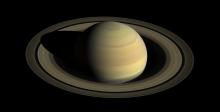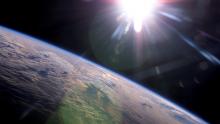Listen to today's episode of StarDate on the web the same day it airs in high-quality streaming audio without any extra ads or announcements. Choose a $8 one-month pass, or listen every day for a year for just $30.
You are here
Earliest Sunset
The shortest day of the year — the day with the least amount of daylight — is coming up on the winter solstice, which is less than three weeks away. One of the odd things about the solstice, though, is that it’s not the date of the latest sunrise or earliest sunset. In fact, for the latitudes of most of the United States, the Sun is setting earliest for the year right about now.
That’s because Earth’s rotation on its axis and its orbit around the Sun aren’t quite synchronized.
Our planet spins at a fairly constant rate. But its orbit isn’t a perfect circle, so Earth covers different distances on different dates. The combination means that the Sun reaches local noon — its highest point in the sky — at different times as measured on the 24-hour clock.
Right now, solar noon comes a few minutes earlier than noon on the clock. And if noon comes earlier, so does sunset. The amount of that offset varies with latitude. From 30 degrees north — the latitude of Houston or Jacksonville — earliest sunset is today. From 40 degrees — Philadelphia or Columbus — it’s December 7th. And from Seattle or Duluth, it’s around the 10th.
Over the next few weeks, solar noon will slip a little later each day. So the latest sunrises come about the same gap after the solstice — in early January. That sequence works from north to south. And right in the middle is the December solstice — the first day of winter and the shortest day of the year.
Tomorrow: a first.
Script by Damond Benningfield





